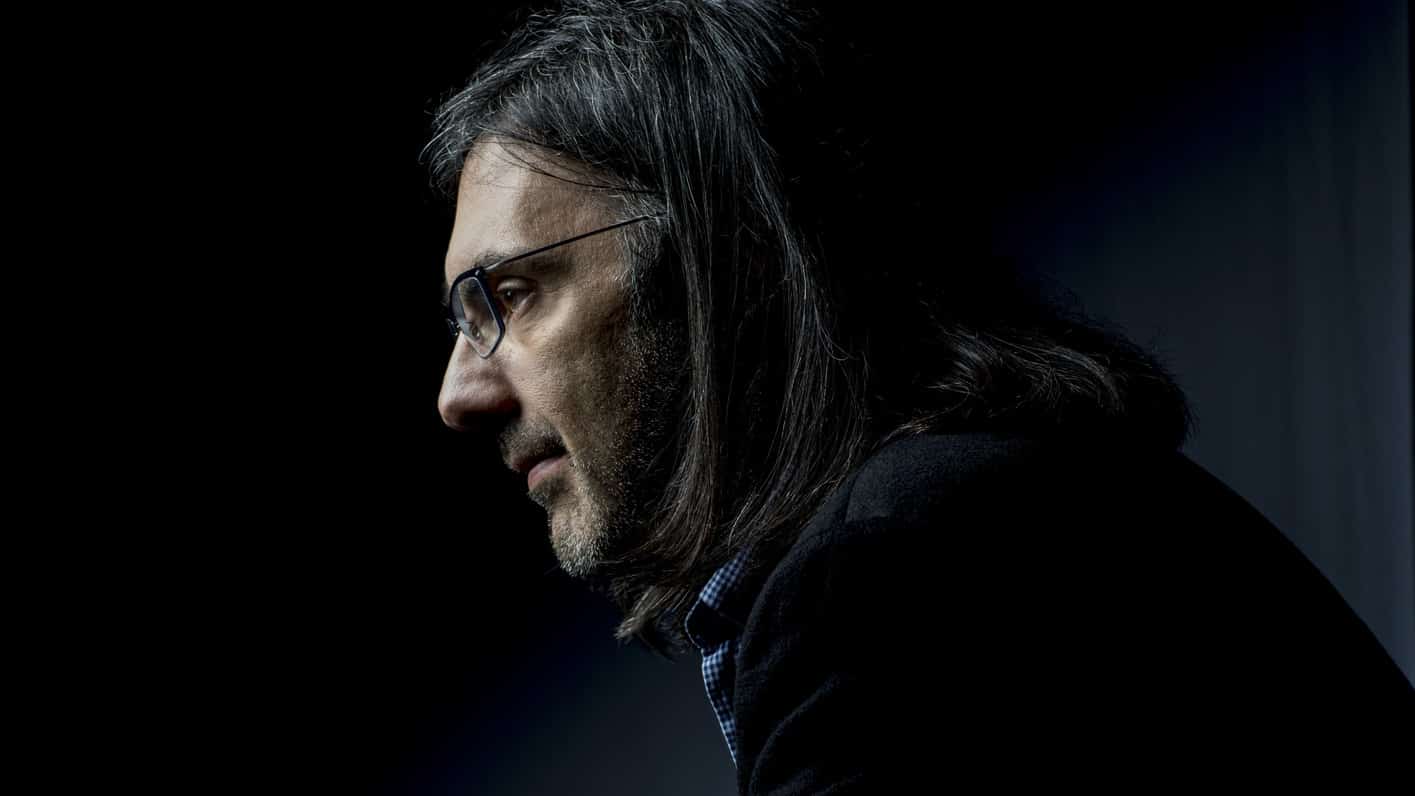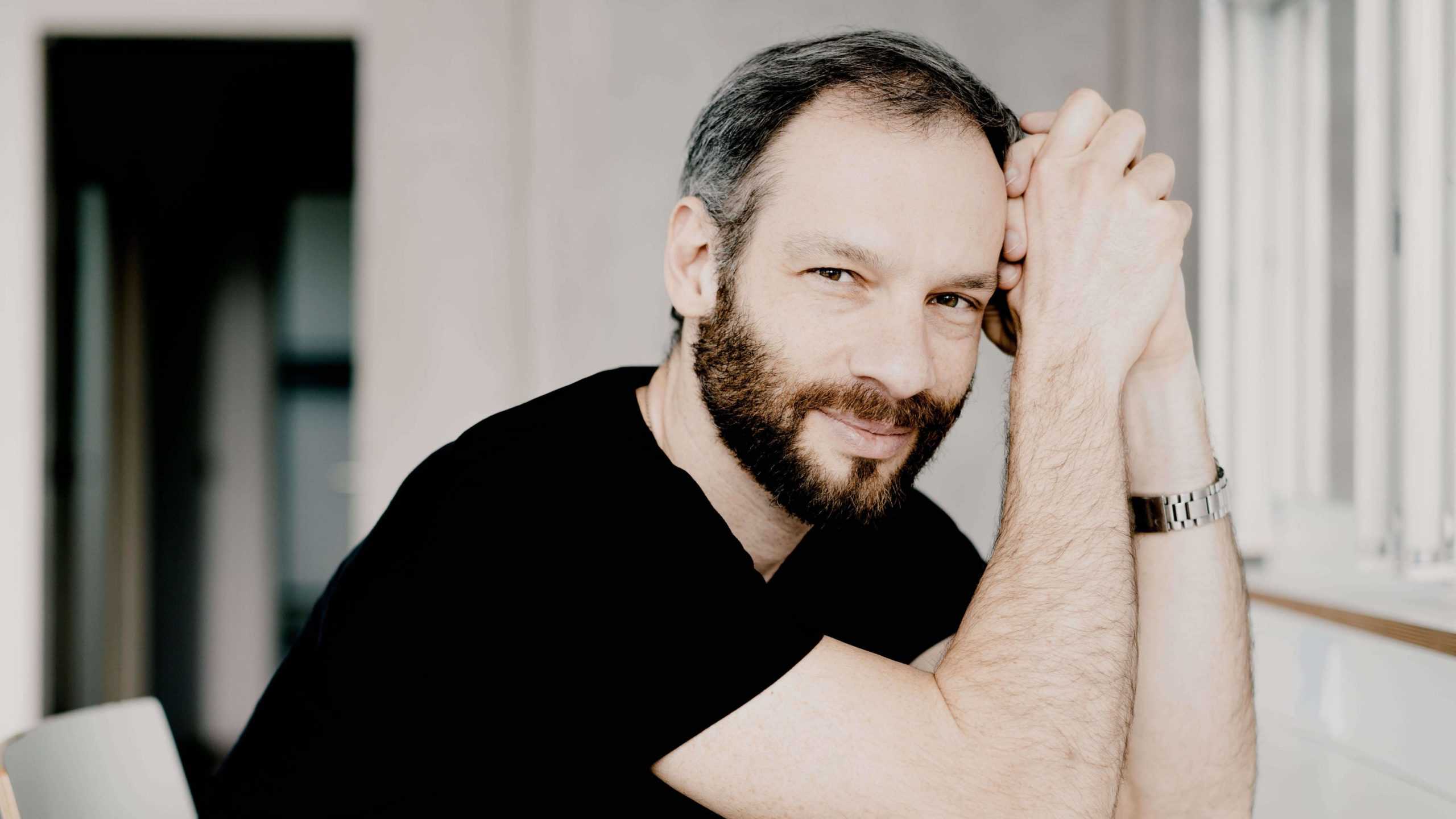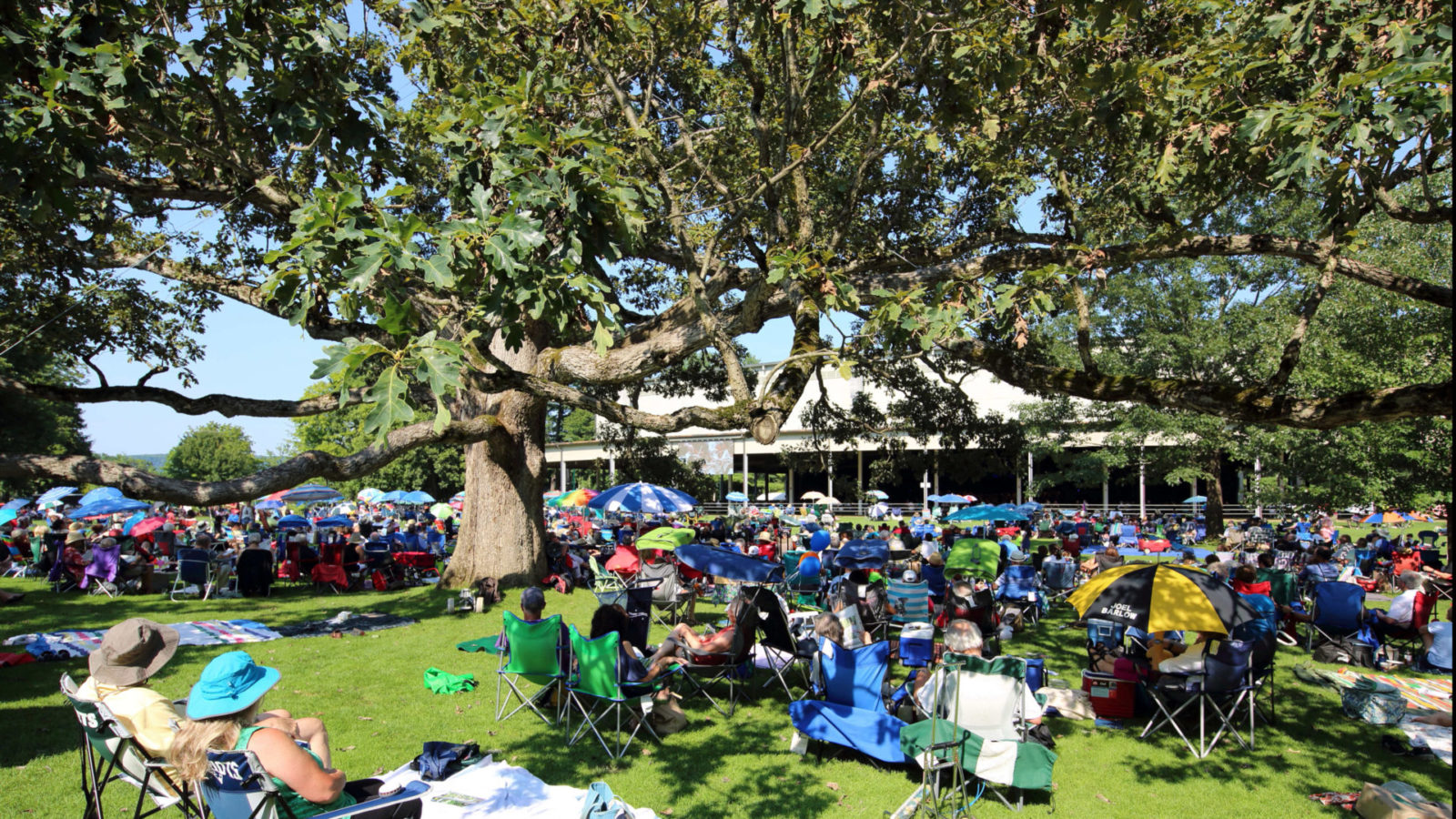On Saturday night at Tanglewood, the BSO – conducted by Dima Slobodeniouk – performed a cohesive program that spans a continuous musical tradition: Dutilleux’s Métaboles, Debussy’s Prelude to the Afternoon of a Faun and Ravel’s Mother Goose.
The conspicuous exception was the program’s inclusion of Mendelssohn’s Violin Concerto – a great German Romantic-era staple – immediately following Métaboles. The Mendelssohn, which had Greek virtuoso Leonidas Kavakos as the soloist, felt somewhat out-of-place in what was otherwise a thoroughly modernist and French program.
The seeming mismatch in the program had a minimal impact toward the spirit of the concert though — Kavakos’s rendition of the verging-on-overplayed repertoire classic was infused with radical and tasteful interpretative choices we might analogize to the harmonic and compositional inventiveness of a Debussy, Ravel, or Dutilleux.

Acclaimed violinist Leonidas Kavakos will perform at Tanglewood. Press photo courtesy of the BSO.
Most notable was Kavakos’s highly democratic approach to musical phrasing: a tendency to lengthen and amplify the ‘in-between’ notes that are often taken for granted, and in equal part, an audibly disciplined, even curt, approach to the stylish passages that violinists often can’t resist embellishing.
Take, for example, Kavakos’s rendition of the opening statement of the first movement’s melody, which is unique among violin concertos for the soloist’s immediate entry, the eschewing of a lengthy orchestral introduction.
During a descending sequence of five slurred quarter notes, Kavokos noticeably (and unconventionally) lingers on the second note, a high F#, whereas most violinists weigh the five notes relatively evenly. What results is a syncopated rhythm, and an almost jazzlike, bluesy effect, which to my ear complements the moody affect of the melody.
Kavakos’s highly democratic approach to musical phrasing (has) a tendency to lengthen and amplify the ‘in-between’ notes that are often taken for granted.
In contrast, he has a sparing approach toward the climactic moments. Slightly later in the piece, the solo violin plays an fast, ascending series of challenging octaves, which are crowned by a high, half note B, which is often lengthened for dramatic effect.
Kavakos plays the climactic high B powerfully, but exactly in tempo – it’s a half note, no more and no less. The “no more” is uncommon. After such a technically demanding and attention-commanding passage, violinists often like to do a little showboating, a little well-earned self-aggrandizing. But not here.
Kavakos’s refusal of ostentatiousness is arguably against the spirit of the Romantic-era violin solo – which is often composed with some amount of showiness in mind – but I think it results in more emotional depth.

Violinist and conductor Leonidas Kavakos will perform at Tanglewood. Photo by Marco Borggeve
The approach – in the best way possible – helps the audience pay attention to what the orchestra is playing, when it’s important. The concerto’s lyrical passages – the first movement’s secondary, more tranquil theme in G-major, as well as the entire second movement – sounded exceptionally pure as a result of this.
Paradoxically, the humble delivery makes me even more assured of his ironclad technical brilliance. There is no doubt in the audience’s mind that Kavakos could “flex” if he wanted to. He simply chooses not to, and somehow, the show of restraint is ultimately more impressive than what’s being restrained from.
The myriad technical challenges of the concerto’s rapid-fire third movement were performed with an air of effortlessness – I could even see Kavakos’s chin occasionally come off of his chinrest, as if he were casually fiddling at a pub instead of soloing with the BSO. Overall, Kavakos’s interpretation of the Mendelssohn had partiality in all the right places.

Tanglewood lawn and shed on a misty day in Lenox. Photo by John Ferrilo, courtesy of Tanglewood.
The rest of the program was no less enjoyable, despite the relative lack of star-power. Up to this point, I’ve only ever listened to recordings of Dutilleux’s music, and not high-fidelity vinyl or anything, just Spotify. Hearing Métabolesperformed by the BSO, with live instrumentation, and with the acoustics of the Koussevitzky Music Shed, was frankly a different experience.
According to the program, Dutilleux’s goal for the piece, comprising five overlapping movements played without pause, was “to present one or several ideas in a different order and from different angles, until, by successive stages, they are made to change character completely.”
At least part of this character change is the result of how each movement showcases a different section of the orchestra – the piece begins with woodwinds, then proceeds to plucking sounds (pizzacato strings and harp), then divisi strings, and so on.

Internationally acclaimed conductor Dima Slobodeniouk joins the Tanglewood Learning Institute (TLI) in an informal conversation to share elements of his work and his life. Press photo courtesy of the Boston Symphony Orchestra
If there’s a certain universalizing flatness to orchestral sounds heard through digital recordings, in the shed, the textural differences between each of these orchestral sections becomes palpable, especially in a piece like Métaboles, which is designed to emphasize these differences.
The shimmer of a harp glissando, the gliding sweep of strings playing in unison, the seismic blast of a coordinated brass section – heard live, they manage to comprise a heterogeneous yet unified whole.
Slobodeniouk’s conducting was dynamic, adjusting readily to the character of each piece on the program; it also contained an expressive yet controlled physicality. During one particularly danceable passage in the Dutilleux, Slobodeniouk swayed at the hips and bent at the knees at a cadence that matched the rhythm.
The shimmer of a harp glissando, the gliding sweep of strings playing in unison, the seismic blast of a coordinated brass section – heard live, they comprise … a unified whole.
During Debussy’s Prelude to the Afternoon of a Faun, he relinquished the baton in favor of his bare hands, whose silken movements drew out dreamy, Arcadian sounds from the orchestra (an effect no doubt bolstered by Elizabeth Rowe’s excellent flute solos).
During Ravel’s Mother Goose – a piece inspired by fairy tales and children’s stories – Slobodeniouk coordinated the extensive numbers of fun solos and sound effects that punctuated the BSO’s dense, lush textures: a tambourine here represents Mother Goose’s treadle, a celesta solo there shows Tom Thumb lost in the woods.
And throughout the concert – comprised of three modern French pieces and a Romantic concerto whose performance matched the energy surprisingly well – the audience is lost in the music.

